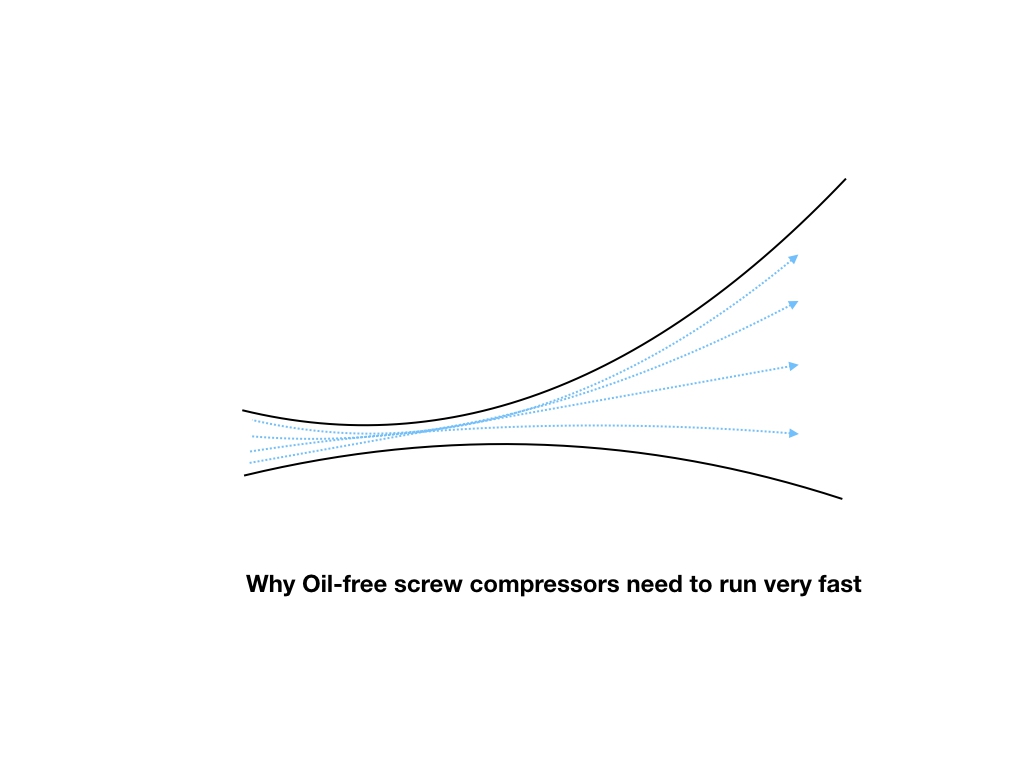A dry screw air-compressor is like a recipricating air-compressor but without segments. If the compression speed is low, most of the air would leak back to the inlet. By running it faster, the time to leak back is shorter.
Dry screws are not having any sealant, like other displacement compressors. An oil-flooded screw compressor has oil that will seal the compression chamber, a recip has segments to lock the gap between the piston and the cylinder. This all results in a high volumetric efficiency.
In a dry screw, the air-gap allows the air to leak back to the inlet.
The way to reduce the back-flow of air is to increase the rotational speed. The rotors of the twin screws have to run double as fast as a oil-flooded screw compressor, to have the best performance it can achieve. Tipspeed of the rotortip has to be at least 80m/s to 100m/s.
By increasing the speed of the rotors, the time to leak back is substantial reduced.
To further improve the volumetric efficiency, a coating is added to the rotor, to reduce the air-gap between the rotors. However, like your cooking pan, the cooking is wearing off too quickly.
The dry screw is not a dynamic compressor because the compression is not coming from dynamic energy (speed) convert into potential energy (pressure). It could be considered a positive displacement machine ?
Is it wise to slow down a dry screw to save energy ?

